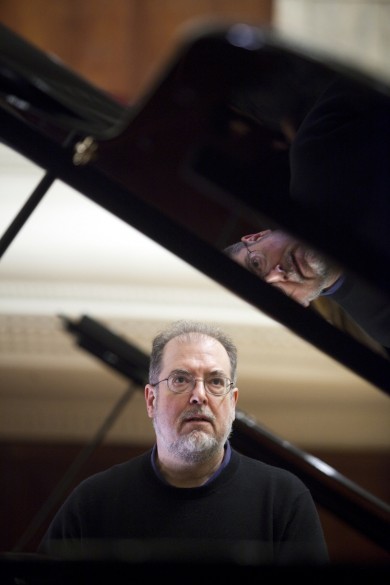Ohlsson, Cleveland Orchestra deliver probing Beethoven and bravura Berlioz

Garrick Ohlsson performed Beethoven’s Piano Concerto No. 4 with the Cleveland Orchestra Friday night at the Arsht Center.
For more than four decades Garrick Ohlsson has been a regular presence on the world’s leading concert stages. One of the most reliable of keyboard artists, Ohlsson has specialized in the romantic repertoire since his first-prize victory at the 1970 Chopin International Competition in Warsaw. In recent seasons he has been acclaimed for complete cycles of Beethoven’s piano sonatas.
Ohlsson’s performance of Beethoven’s Piano Concerto No. 4 with Franz Welser-Möst and the Cleveland Orchestra on Friday night at the Arsht Center was masterful, a demonstration of probing musicianship devoid of flashy bombast.
The serenity of the concerto’s opening chords was interrupted by a ringing cell phone. Undaunted, Ohlsson imbued the Allegro moderato with dreamy introspection, bringing a singing line to the principal themes. His light touch was enhanced by astutely judged dynamic gradations yet Ohlsson can unleash considerable bravura as was evident in the vibrant cadenza.
In the David and Goliath battle of the Andante con moto, the orchestra’s assertive initial phrases were answered by Ohlsson’s restrained gravitas. As the music calmed, the piano line turned Chopinesque, aristocratic and brooding.
Fire and elegance took equal measure in the Rondo finale, and Ohlsson’s classically scaled, exquisitely shaped reading culminated in a superbly rendered cadenza, fully voiced and clear. Dusting off the cobwebs of this familiar score, Ohlsson’s alternately poetic and vivacious traversal revitalized Beethoven’s most personal concerto. Welser-Möst was a model collaborator, the orchestra seemingly breathing as one with the soloist, exuding dark, full bodied string sonority and beautifully blended wind playing.
Berlioz’s Symphonie Fantastique is a nightmarish portrait of an artist’s obsessive love, leading to murder, execution and a celebration of the witches. A wildly innovative orchestral showpiece, the score served as a vehicle for the Clevelanders’ tonal luster and corporate gleam. More Central European than Gallic, Welser-Möst’s no-nonsense reading built up tension as the principal theme morphed from excited ardor to grotesque caricature.
In the briskly paced ballroom waltz, the purity of Joshua Smith’s flute mellifluously blended with silken strings. The burnished tones of the cello section highlighted the country scene of the third movement, an Italianate melody flowing with supple grace.
Restrained timpani rolls evoked subtle storm clouds that unleashed with full force in a fleet March to the Scaffold, the bassoon line over plucked strings incisive and transparent. The orchestra’s firepower burst forth in the Witches’ Sabbath, the edgy string tones conjuring up demonic visions. The distinctive sound of the Cleveland’s chimes (which date back to the George Szell era), are devoid of metallic harshness and here sounded the death knell with ominous power. For sheer precise articulation, the brass commanded attention, the voluminous tone of the tubas voicing the Dies irae, at the climax of this virtuosic rendering of Berlioz’s symphonic dream.
The Cleveland Orchestra repeats the program 8 p.m. Saturday at the Arsht Center. 305-949-6722; arshtcenter.org/cleveland.
Posted in Performances
Leave a Comment
Sat Feb 2, 2013
at 1:46 pm
No Comments






